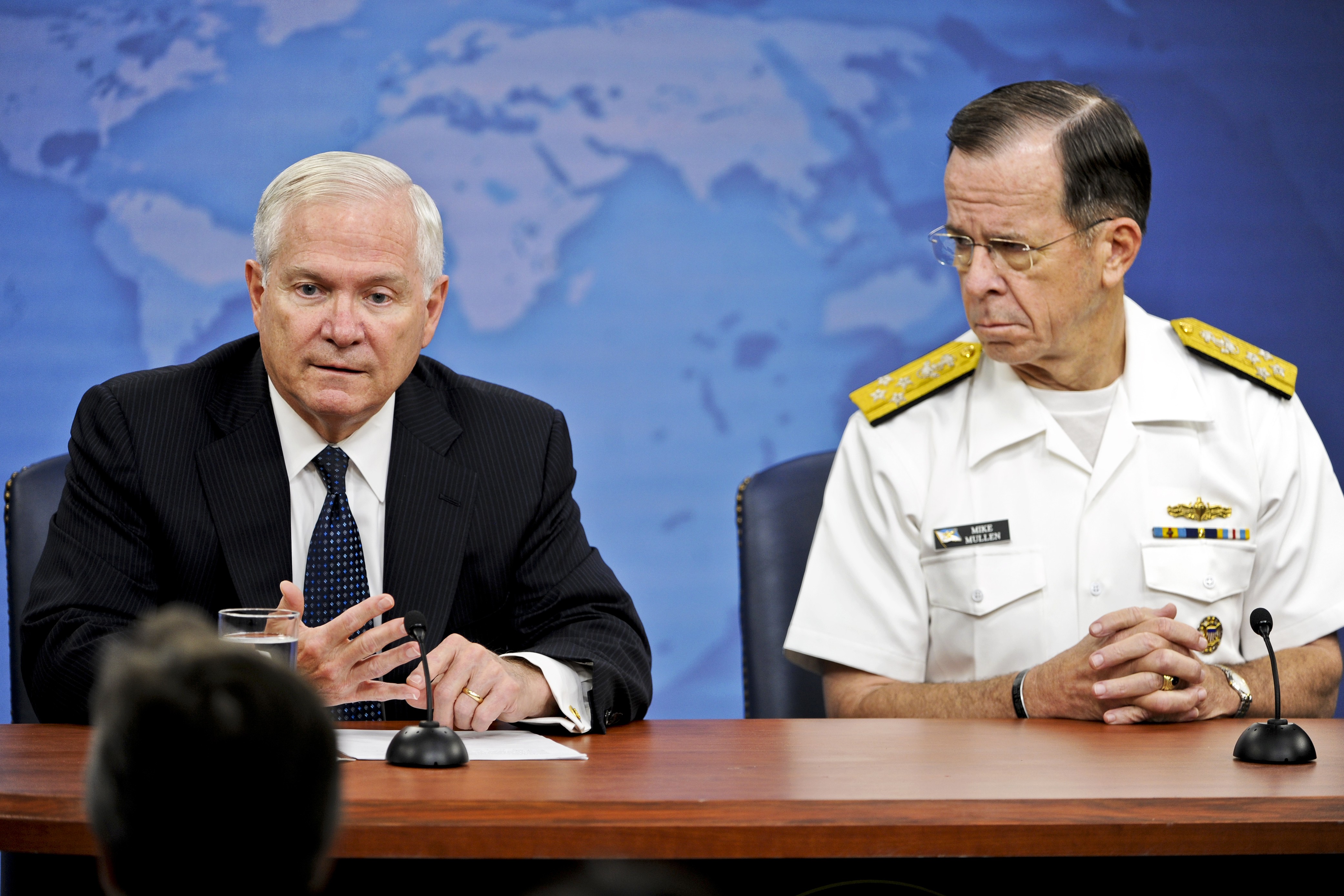WASHINGTON, May 18, 2011 -- Defense Secretary Robert M. Gates today announced the framework for a comprehensive review of military spending designed to put national security needs ahead of arbitrary budget cuts.
"We must reject the traditional approach of applying across-the-board cuts -- the simplest and most politically expedient approach, both inside this building and outside of it," Gates said at a Pentagon news briefing. "That kind of an approach preserves overhead and maintains force structure on paper. But it results in a hollowing out of the force from a lack of proper training, maintenance and equipment. We've been there before in the 1970s and in the 1990s."
President Barack Obama, in an April 13, 2011, speech on the nation's fiscal challenges, set a goal of saving $400 billion over 12 years, mostly from the Defense Department and beyond savings already identified. To do that, he directed Gates and other Pentagon leaders to conduct a "fundamental review of America's military missions, capabilities, and security role around the world," Gates noted.
Defense leaders have worked for more than two years to find cost savings in the department, Gates said. The effort began in acquisitions, with more than 20 weapons systems being curtailed or canceled, then moved to cutting overhead costs and redirecting the savings to support warfighters and help to reduce the federal deficit.
"The overarching goal of these efforts was to carve out enough budget space to preserve and enhance key military capabilities in the face of declining rates of budget growth," he said.
The goal of the new review, Gates said, is "to preserve a U.S. military capable of meeting crucial national security priorities, even if fiscal pressure requires reductions in the force's size."
The review will be guided by the National Security Review, the National Defense Strategy, the National Military Strategy, the Chairman's Risk Assessment and the Quadrennial Defense Review, or QDR, to ensure it is focused on "strategic policy choices, first, and corresponding changes in the DoD budget, second," the secretary said.
The director of cost assessment and program review, the undersecretary of defense for policy, and the chairman of the Joint Chiefs of Staff will lead the effort jointly, he added.
The review will provide a strong analytical link currently missing between the QDR and the present makeup of the forces, the secretary said. Once competing strategy options are identified, only then should the review consider fiscal implications and options, he said.
The secretary outlined a four-step process for saving money in the department that would start with identifying additional efficiencies to be gained from eliminating bureaucratic excess and overhead.
But that alone won't generate enough savings, Gates said, so examiners should then move on to looking at programs, processes and mandates that drive up costs, "to include the way we deliver health care, compensate military personnel, provide retirement benefits, sustain our infrastructure and acquire goods and services."
In the third category, officials will review missions and capabilities of marginal scope against overall strategy.
"They represent missions that the department carries out today that, while of value, are not central to our core mission or are of lower priority," Gates explained.
Gates cited the long-standing U.S. strategy that calls for the military to be able to fight two major, regional conflicts simultaneously as an example of reviewing strategic alternatives.
"If you were to tell yourself the likelihood of having two such fights simultaneously is low, and you could therefore plan to fight sequentially, that would have huge implications in terms of the size of force that you need to maintain," he said. "But the other side of that is the risk involved if you're wrong."
The final area for consideration - "the hardest category, strategically, and I would say intellectually," Gates said - is to consider alternatives to the Quadrennial Defense Review strategy that translate into options for reductions in force structure or capability needed to execute the strategy, Gates said.
Such consideration would be informed by all the other activities in the framework, he added.
"In the end, this process must be about identifying options for the president and the Congress where the nation is willing to accept risk in exchange for reduced investment in the Department of Defense," Gates said.
No matter what happens in the review process, the secretary said, leaders must make tough decisions and avoid the "hollowing out" of the forces.
"I want to force that kind of discussion," he said. "If we're going to cut the military, if we're going to reduce the resources and the size of the U.S. military, people need to make conscious choices about what the implications of that are for the security of the country, as well as for the operations that we have around the world."
Related Links:
Army.mil: Inside the Army News
STAND-TO!: 2010 Quadrennial Defense Review


Social Sharing